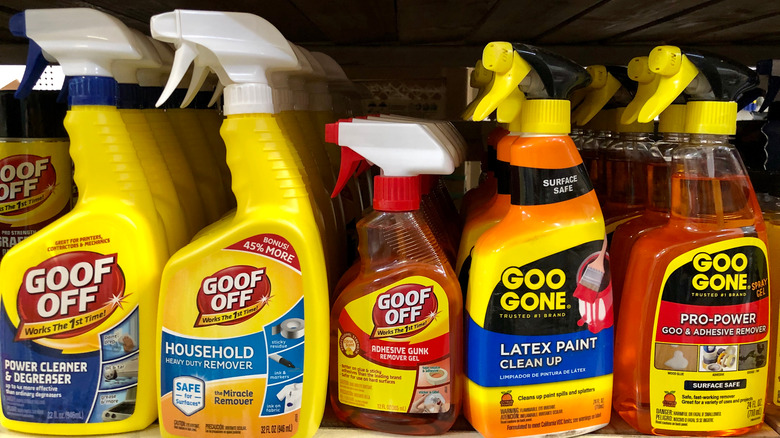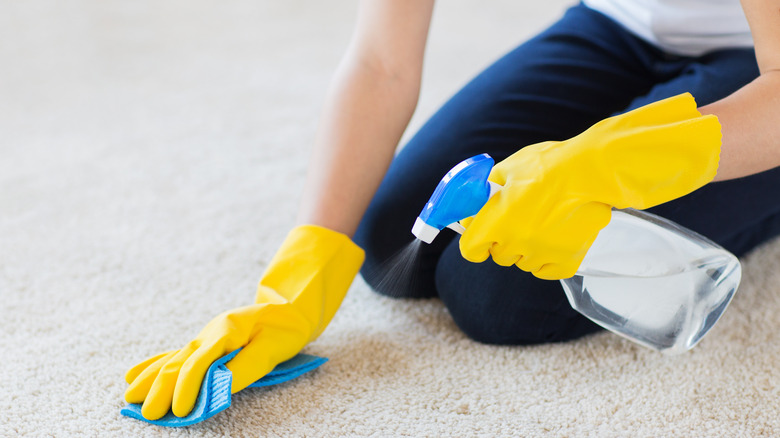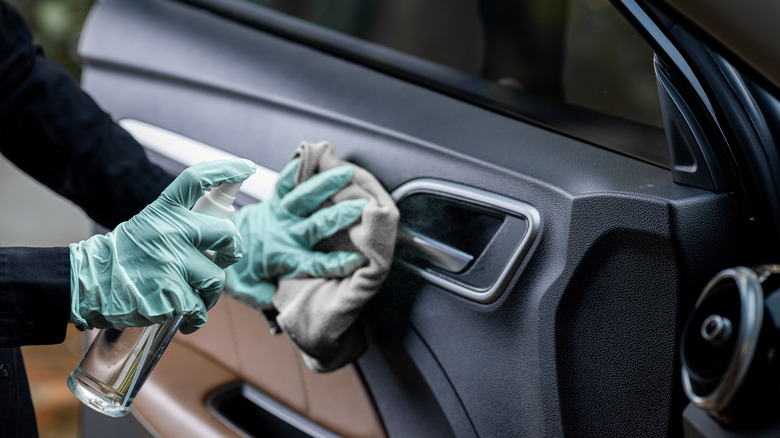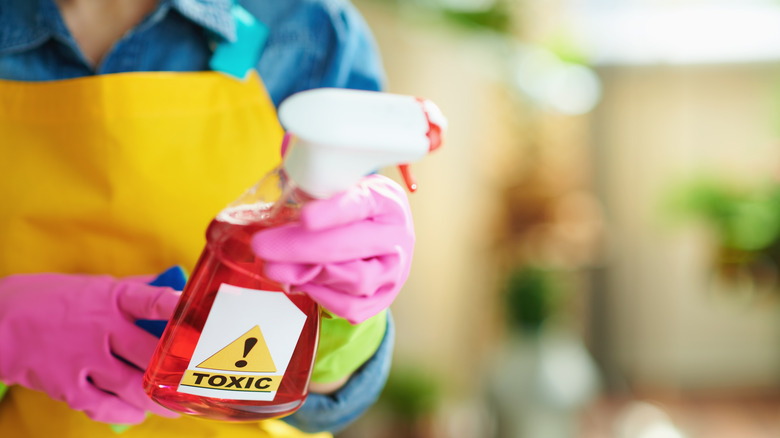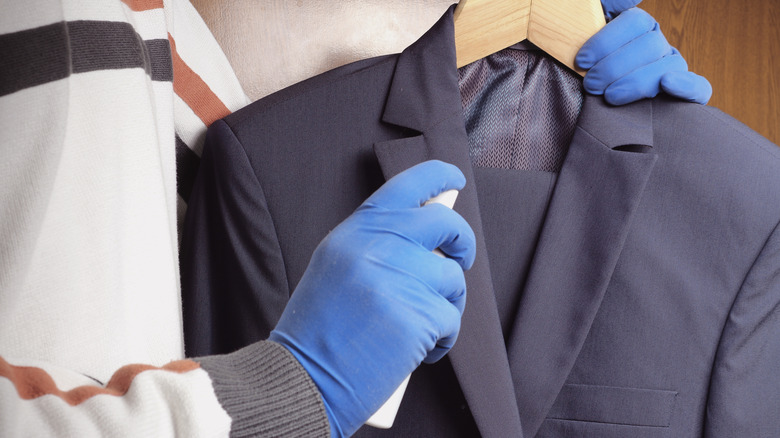5 Mistakes To Avoid When Using Goo Gone
Goo Gone is a great product that can help remove stubborn adhesives and messes, such as candle wax, gum, sticker residue, tree sap, and more. According to Goo Gone, the product is made with the proprietary formula Citrus Power, which removes hard-to-clean adhesives, grease, and almost any other type of gunk off surfaces. Many ingredients in this product act as solvents, which are substances that can break down other materials. As a result, the unique formula makes it easier to get rid of frustrating messes without much effort and minimal damage.
While it can be a lifesaver in many instances, you need to know how to use it correctly for it to be effective. Learning the mistakes to sidestep when using Goo Gone is essential to ensure you can lift gunky stains and avoid creating a bigger headache for yourself. Fortunately, we'll cover the top mistakes to evade to improve your experience.
Forgetting to spot test
It's an excellent idea to spot-test Goo Gone in an inconspicuous location before using the product to remove gunky residue from a specific area. This ensures the solution won't discolor or permanently damage a more prominent space that may be more expensive or difficult to fix. While it's an important step to take, many people forget to do it.
Spot testing is simple; all you have to do is apply the solution in a hidden area. For example, this may be a section behind the couch, the underside of a blanket, or a small corner of your wooden floor. If you're using Goo Gone on your clothes, consider testing it on items you don't care about that are made from similar materials. Royal Interior Cleaning recommends using the product as directed and then grabbing a flashlight or another light source to determine whether the chemical has caused a stain.
Using the product on the wrong materials
Even though Goo Gone is an effective product for removing adhesives and other sticky messes, it can't be used on everything. For example, you can't use this chemical on brass or gold with lacquer, corks, leather, paper, plywood, rubber, skin, and discs, via Goo Gone. Using the product on these surfaces can cause damage, and the original formula can irritate your skin.
The company also recommends taking extra steps when using the product on certain items. Baking pans, for instance, should be washed thoroughly since Goo Gone isn't food safe. Another example is your car dashboard. While the company claims it's most likely compatible, they recommend checking the type of material before application. You can use many Goo Gone substitutes to lift off gunk without damage, including creating your DIY formula and possibly using a magic eraser. Regardless of what you use, always make sure to read and follow the manufacturer's instructions closely.
Being unfamiliar about the potential hazards
Another mistake people make when using Goo Gone is being unfamiliar with the potential hazards. At the end of the day, this product is a chemical that can cause allergic reactions and put your health at risk due to inhalation, ingestion, and eye contact, per the University of Illinois. If mishandled, it can hurt your eyes, cause discomfort or pain, result in nausea or vomiting, irritate your lungs, and more.
In addition to the possible health hazards it may cause, it's also combustible and can catch fire when exposed to flames or other hot substances. If you want to get rid of sticker residue with Goo Gone, make sure to read the directions on the label closely and take the manufacturer's recommendations and warnings seriously. It may also be a good idea to wear protective clothing and safety glasses to keep your skin and eyes safe.
Not removing clothing before treating
You can easily avoid this common mistake by removing your clothes before applying Goo Gone. If you get gum on your garment, you may want to use this product to lift the sticky mess. However, Goo Gone recommends you don't use this product while wearing the affected clothing article due to the effect of the formula on exposed skin. Instead, take off whatever you're wearing, use the product as directed, and wash the clothes with a little more detergent than normal.
One reason it's a good idea to remove your clothing is because Goo Gone can irritate your skin. For example, if you're wearing something sheer, the product may contact your skin, leading to a rash, redness, dryness, and cracking. It can also result in something known as sensitization. According to the Society of Chemical Hazard Communication, this is an immunological response that causes inflammation instead of an itchy rash.
Avoiding ventilation when using
When using this product, it's essential to ensure your home or space is adequately ventilated. According to the Goo Gone Safety Data Sheet by the University of Illinois, it may irritate the respiratory tract when inhaled. You may breathe in the product more easily if windows, doors, or air vents are closed. As such, it's essential to take the necessary precautions.
By improving the ventilation in your house, you can promote good airflow and get fresh air into your home. In turn, you decrease your chances of inhaling toxic fumes that can affect your lungs. If you can't use Goo Gone in a well-ventilated area, consider using it outdoors or in an open garage. However, you can take a few first-aid measures if the chemical is breathed in. For example, the Safety Data Sheet recommends you move to an area with fresh air and request medical assistance if your symptoms are life-threatening.
